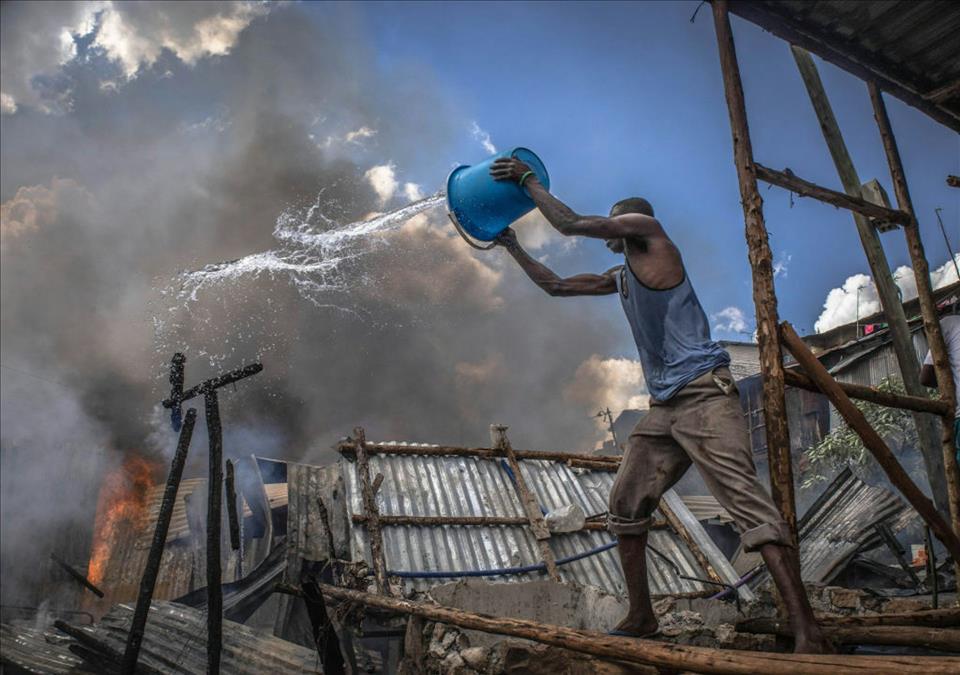
Fire Safety Tips At Home: The Risks And How To Avoid Them
Rhoda Afriyie Mensah is a fire protection engineer specialising in the flammability of materials. Her research focuses on understanding how materials behave under fire conditions. The aim is to improve fire safety, especially in people's homes. In this article, she explains the fire risks associated with materials commonly found in African homes and provides five fire safety tips to help reduce these dangers.
What are the main fire risks in homes?Fire accidents in homes and buildings claim lives, destroy property and disrupt communities. Fires may start for various reasons, from electrical faults to open flames. The materials used in homes contribute to the spread and intensity of these fires.
In rural areas and informal settlements in Africa, many homes are built using untreated wooden beams and thatched roofs. These materials are affordable and readily available, but they easily catch alight and burn. A small spark from a cooking fire or electrical fault can set thatch ablaze, and the fire spreads rapidly, making it difficult to contain.
In urban areas, where modern building materials are more common, many homes still rely on wooden structures. They can catch fire easily if not treated with fire-retardant chemicals. In urban informal settlements, homes are often constructed using plastic sheeting for walls and roofs. Plastics are highly flammable and, when ignited, burn quickly, releasing toxic fumes that can suffocate occupants before they have a chance to escape. The combination of fragile construction and overcrowding in informal settlements makes them particularly vulnerable to fire disasters.
Cooking with charcoal remains a common practice in rural African homes, but it poses significant fire risks. Charcoal embers can stay hot long after cooking, potentially reigniting and causing fires, especially if not fully extinguished. In modern homes, liquefied petroleum gas (LPG) is more frequently used for cooking, offering a cleaner alternative but introducing its own dangers. Leaks from damaged or improperly maintained LPG cylinders can lead to fires or explosions if ignited by a spark.
Read more: Why unsafe paraffin stoves are still being widely used in South Africa
Old or substandard electrical wiring is another significant fire hazard in African homes. Many homes, particularly older ones or those in informal settlements, have faulty electrical systems that are prone to short circuits. These electrical faults can easily spark fires, especially in homes that are not equipped with proper circuit breakers. Additionally, overloading electrical outlets with too many devices can cause overheating, leading to fires.
How can people protect their homes from fire hazards?Fire safety devices like smoke detectors or fire alarms are too expensive for many households. But there are simple, low-cost ways to protect homes from fire hazards.
Read more: Smoke alarms can save lives in informal settlements – if the design is right
1. Keep a bucket of sand outside every home. Sand is an excellent fire suppressant, particularly for fires caused by flammable liquids like paraffin. Sand can be quickly poured over the flames, cutting off the fire's oxygen supply. This method is useful where water is not easily available, and it can prevent a small fire from escalating into a full-blown disaster. Every home should have at least one bucket of sand placed where it's easy to reach, preferably near the entrance or kitchen.
2. Make a fire blanket. Fire blankets are typically used to smother small fires, like those that break out in kitchens. Commercially available fire blankets can be costly but you can make your own using natural fabric, such as cotton or wool. It can quickly cover small flames, cutting off the fire's oxygen supply and preventing it from spreading.
3. Manage vegetation. Creating a“defensible” space around homes is vital in regions prone to wildfires. This strategy, advocated by firefighting agencies and forest management services, involves trimming and managing vegetation to minimise fire risks. Homeowners are advised to trim bushes and trees and maintain a cleared area by removing dead leaves, branches and debris.
4. Make sure cooking areas are well ventilated. Many fires start in kitchens due to the use of open flames or stoves that aren't working properly. Cooking with charcoal or kerosene should always be done in well-ventilated areas to prevent the accumulation of gases that could ignite. After cooking, make sure all embers and flames are fully extinguished. Don't leave cooking appliances unattended, and keep flammable materials away from open flames.
Read more: Injuries from burns in Kenya affect mostly children and happen in homes
5. Check electrical systems regularly. Many fires in African homes are caused by faulty electrical wiring or overloaded outlets. It is essential for homeowners to have their electrical systems checked regularly, preferably by a qualified electrician. Even in areas where professional electricians are scarce, families can learn basic safety checks, such as inspecting for exposed wires or ensuring outlets are not overloaded. Also, use surge protectors to prevent electrical faults caused by power surges .
Fire hazards are a significant concern in African homes, where the combination of highly flammable materials, poor construction and lack of fire safety tools can lead to devastating outcomes. The simple measures I've outlined here can help families reduce the risk of fire. Increased awareness and community education, too, can make a difference to protect lives and homes.

Legal Disclaimer:
MENAFN provides the
information “as is” without warranty of any kind. We do not accept
any responsibility or liability for the accuracy, content, images,
videos, licenses, completeness, legality, or reliability of the information
contained in this article. If you have any complaints or copyright
issues related to this article, kindly contact the provider above.


















Comments
No comment